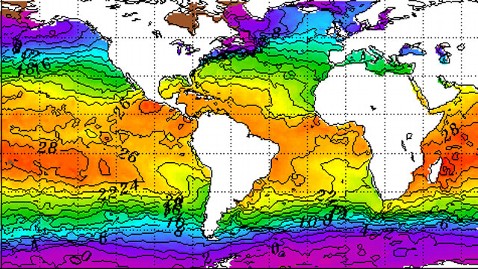Adios La Nina: Quieter Hurricane Season?

NOAA map of sea-surface temperature anomalies in the world's oceans. La Nina is a giant cool patch of water along the equator in the Pacific.
Those cooler-than-normal tropical Pacific ocean temperatures known as La Niña are expected to weaken and dissipate this spring, government forecasters said today.
La Niña - or the lack of it - could mean good news when it comes to the upcoming hurricane season, said Mike Halpert, deputy director of NOAA's National Climate Prediction Center.
"If we have La Niña, that would argue for an active hurricane season. If you take it away, maybe it takes away some of the activity," Halpert tells ABC News.
That's because La Niña typically helps reduce those hurricane-killing atmospheric gusts known as wind shear. Without those high winds, the path is clear for tropical waves to more easily develop into hurricanes. (The 2011 Atlantic hurricane season was particularly active, producing 19 tropical storms including seven hurricanes.)
Halpert adds that it's still too early to tell just how La Niña and other weather patterns might affect hurricane season. Forecasters at NOAA will issue their initial hurricane outlook in May. The start of hurricane season is June 1.
The effects of La Niña ( animation here) are mostly felt in winter, typically leading to drier conditions in the southwest and plains and colder, wetter-than-normal conditions in the Pacific Northwest. It's counterpart, El Niño, refers to unusually warm waters in the Pacific.